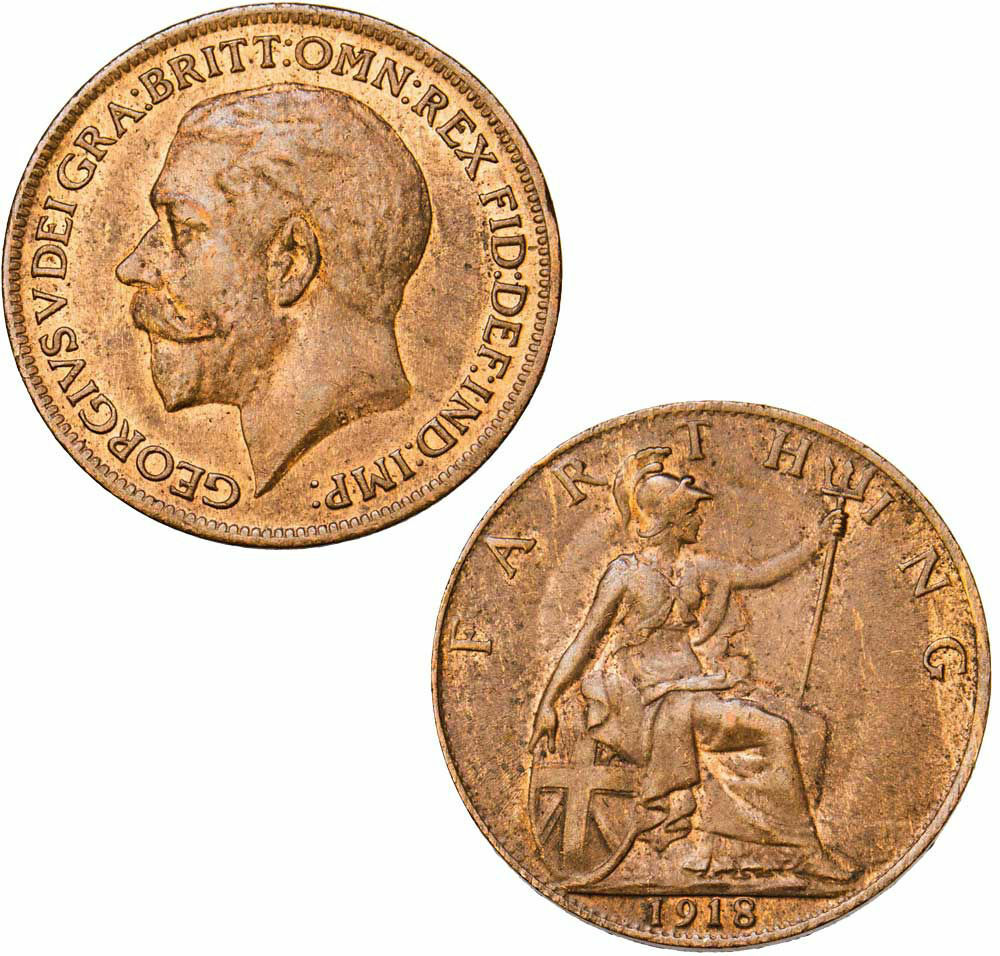The head used on the George V farthing was the Sir Bertram Mackennal design used on the larger coins. The reverse carried through from the Edward VII farthing. The principal difference from the halfpenny and penny was that the 'modified effigy' introduced in 1926 continued through to 1936 instead of being replaced by a smaller version in 1928.
The new reverse, also introduced in 1926, was a reduced version of that used on the penny and halfpenny from 1927 amd 1925 respectively.
Ghosting does not occur as frequently on the farthing as it does on the two larger bronze coins, and disappears with the new 1926 issue.
The farthing continued to be issued in an artificially toned state to avoid confusion with the half sovereign until 1917. Half sovereigns were by that time no longer being struck at the mint.
These 1918 Farthings struck in the last year of WW1, the first farthings that were not artificially toned are not common and are in Uncirculated to Brilliant Uncirculated condition. That means that they are Uncirculated with lustre but not fully Brilliant. Here at Coincraft we try to grade coins properly. Get one for yourself, while stock lasts...
ADD THIS 1918 FARTHING TO YOUR COLLECTION
Follow us on Instagram and Facebook and be one of the first collectors to read our tips



























